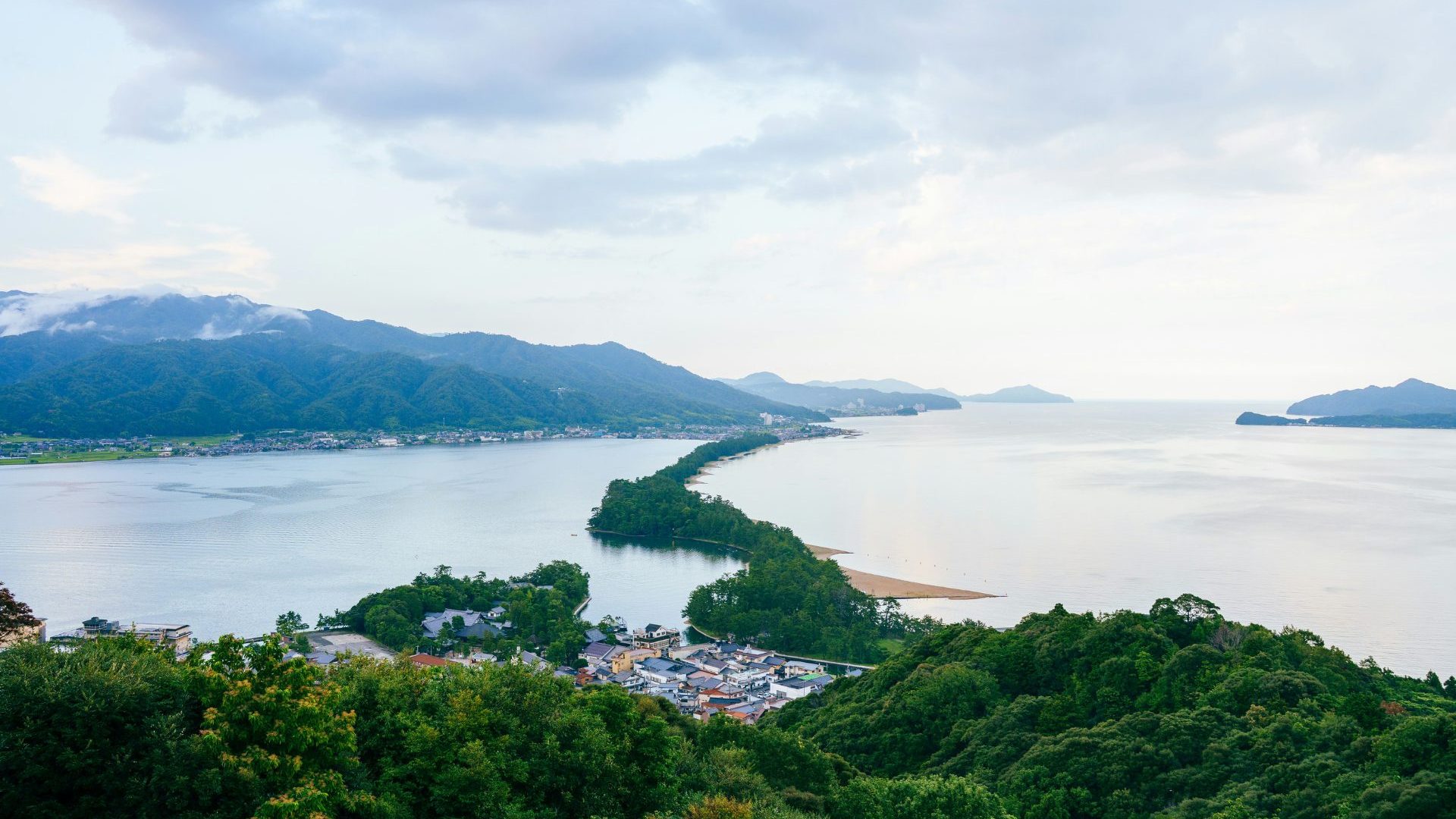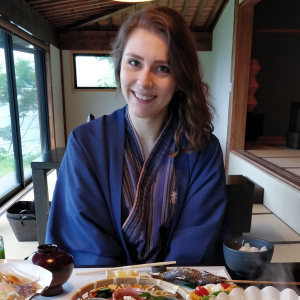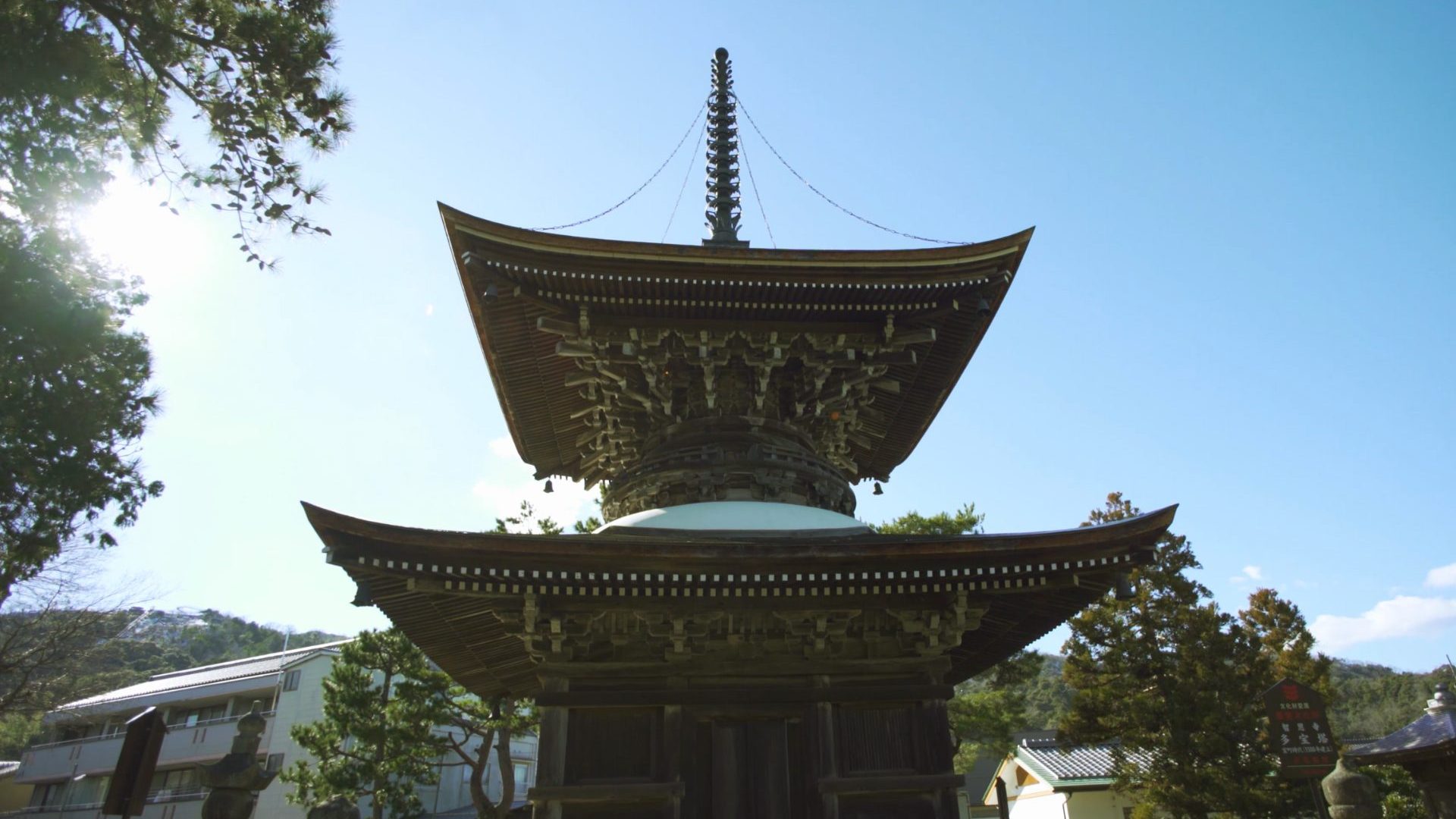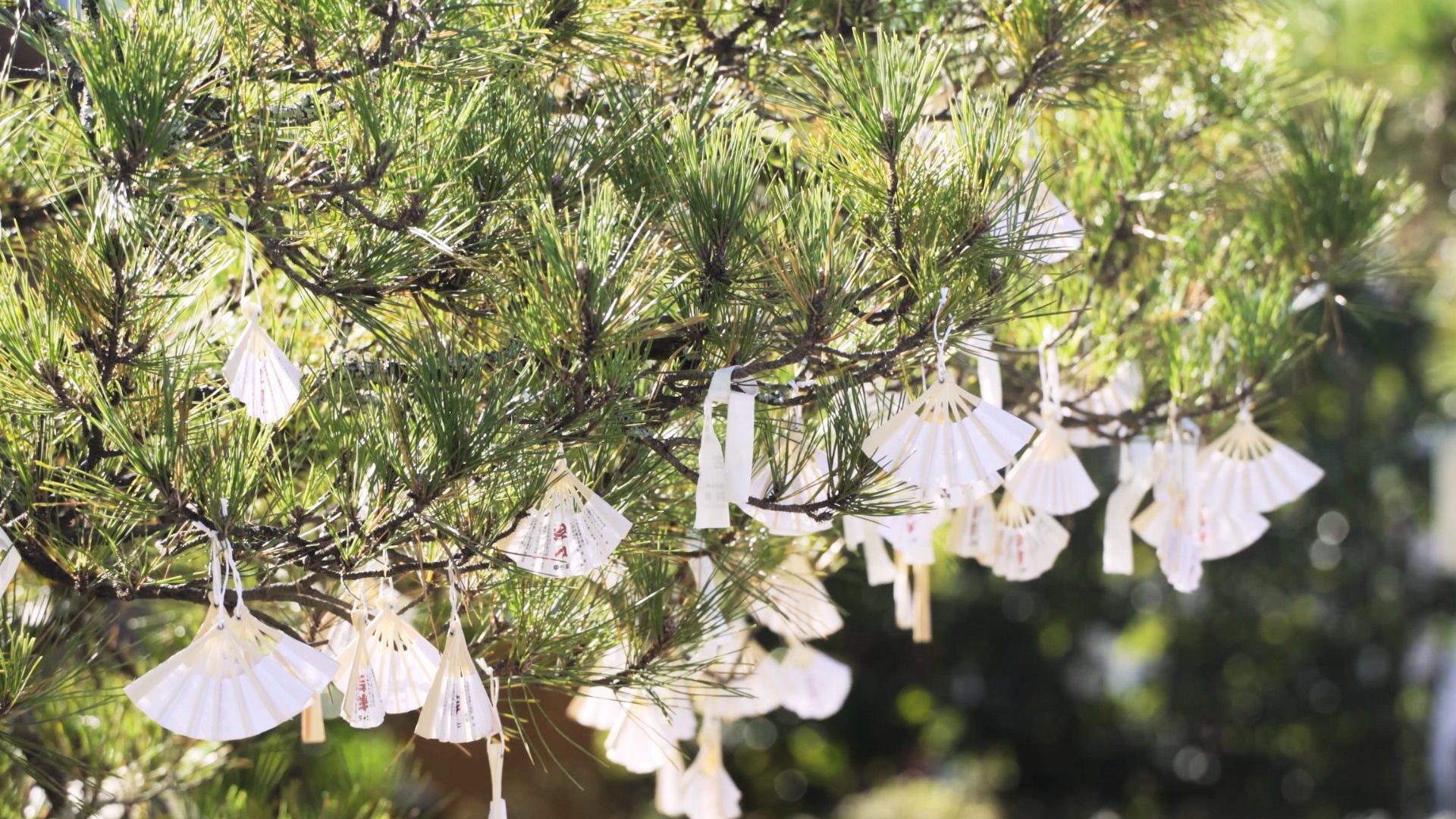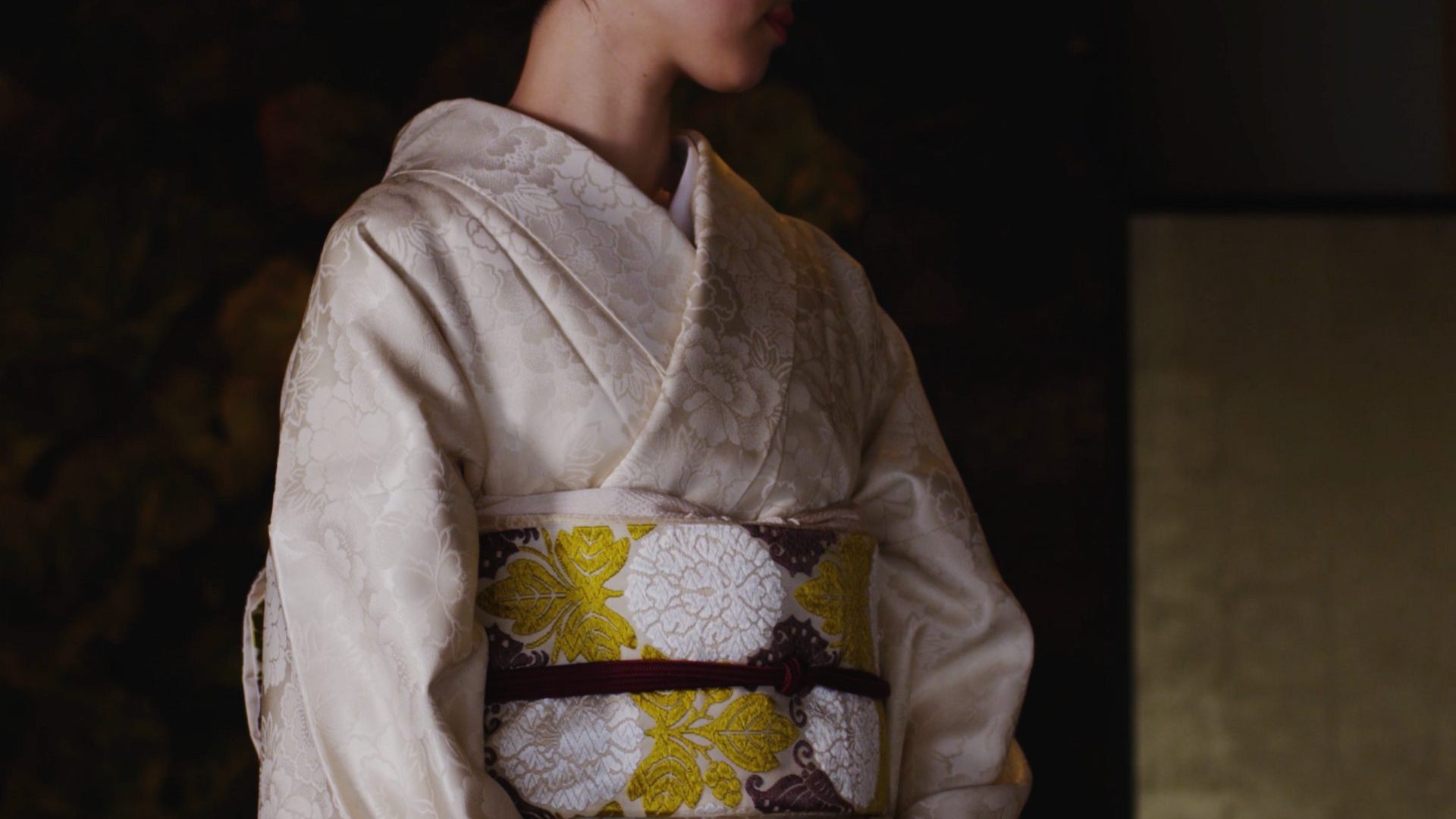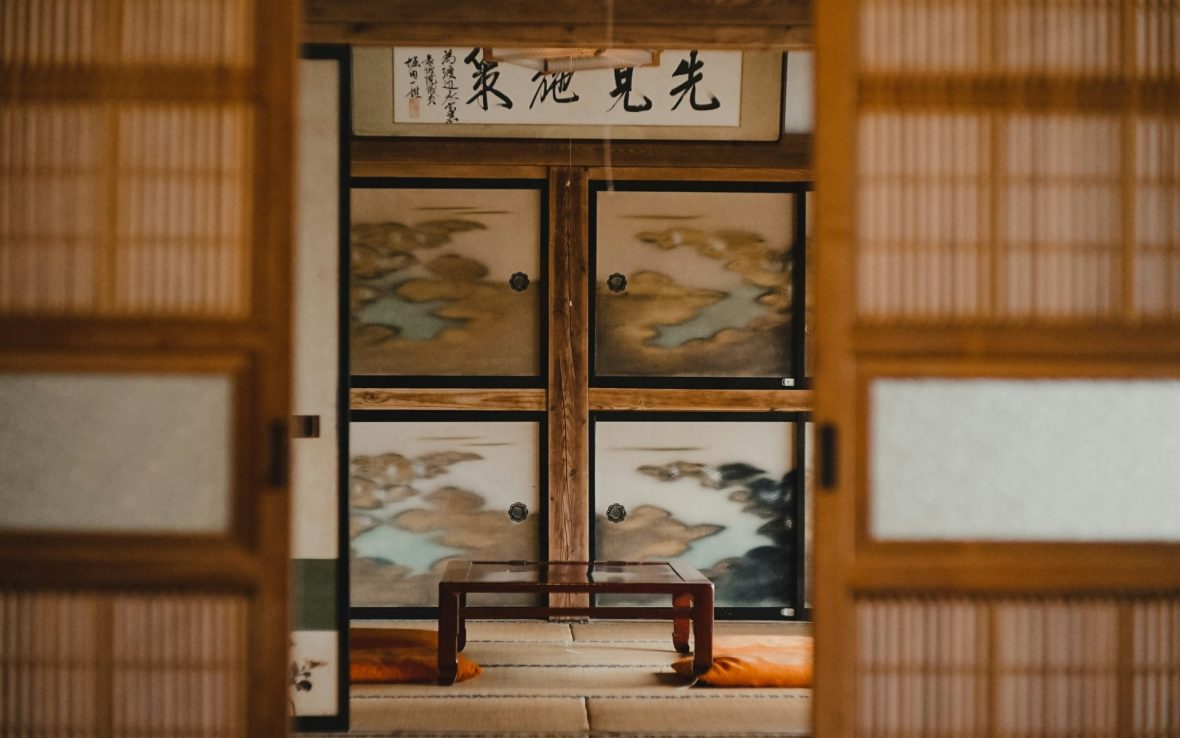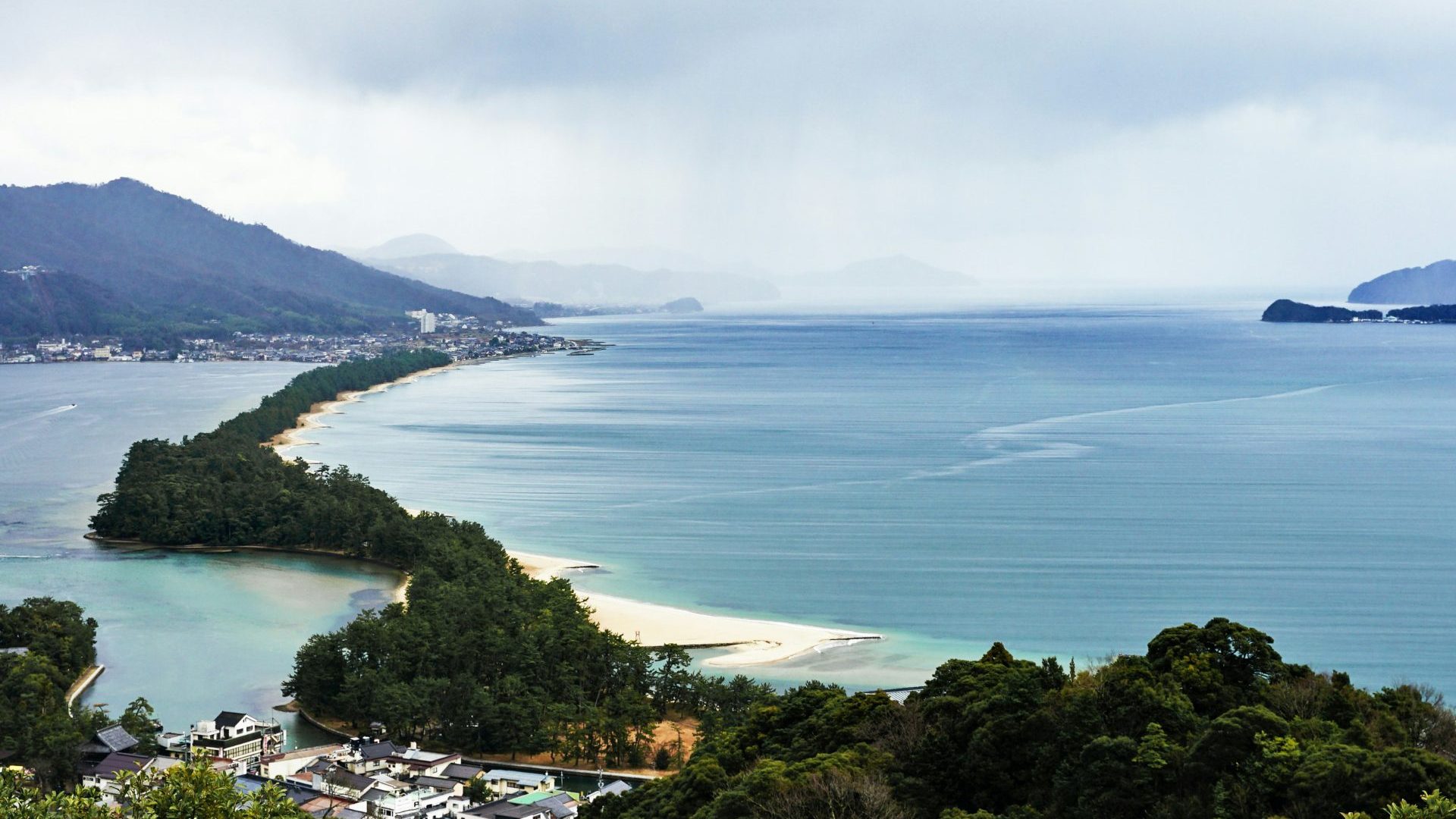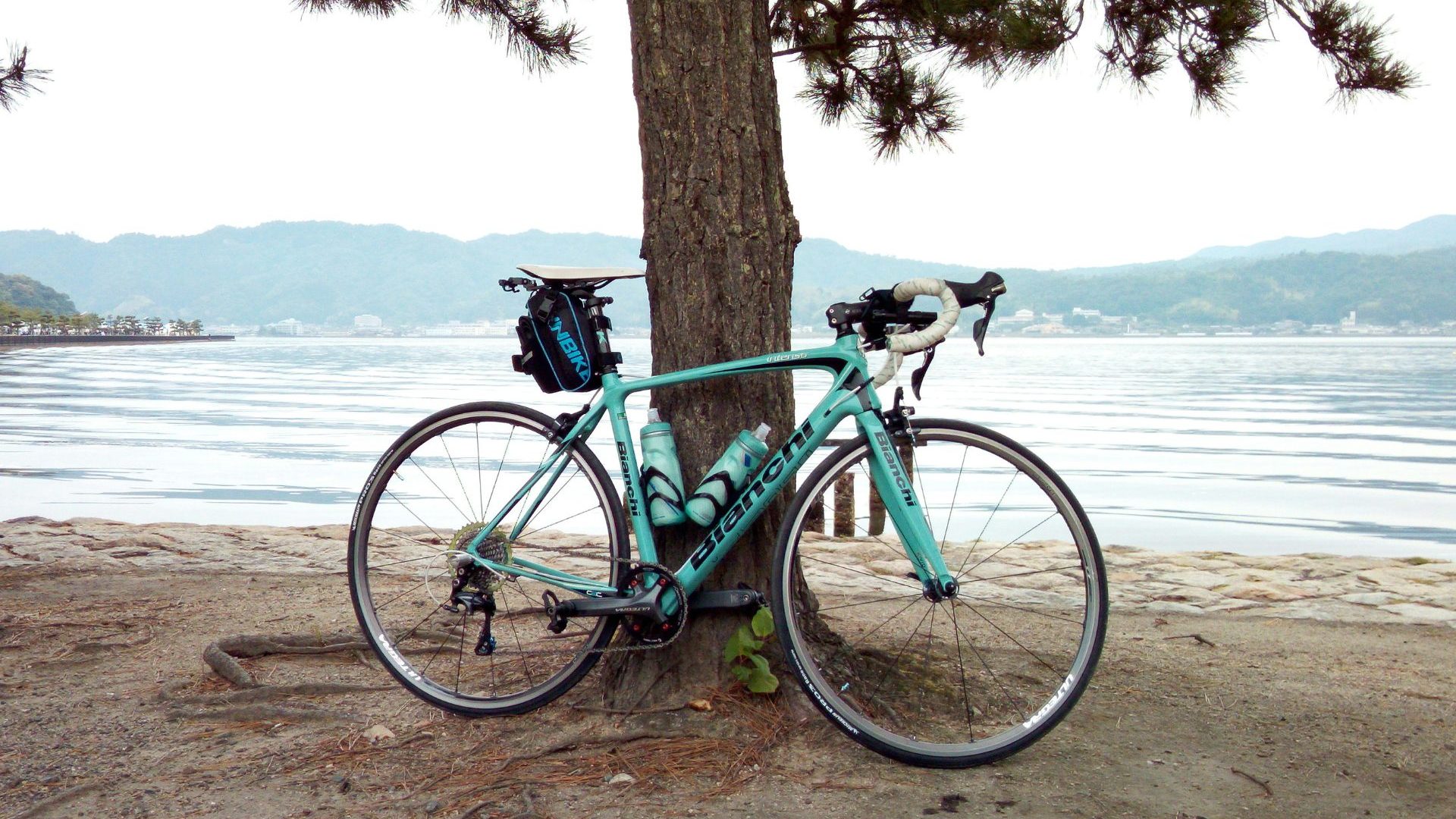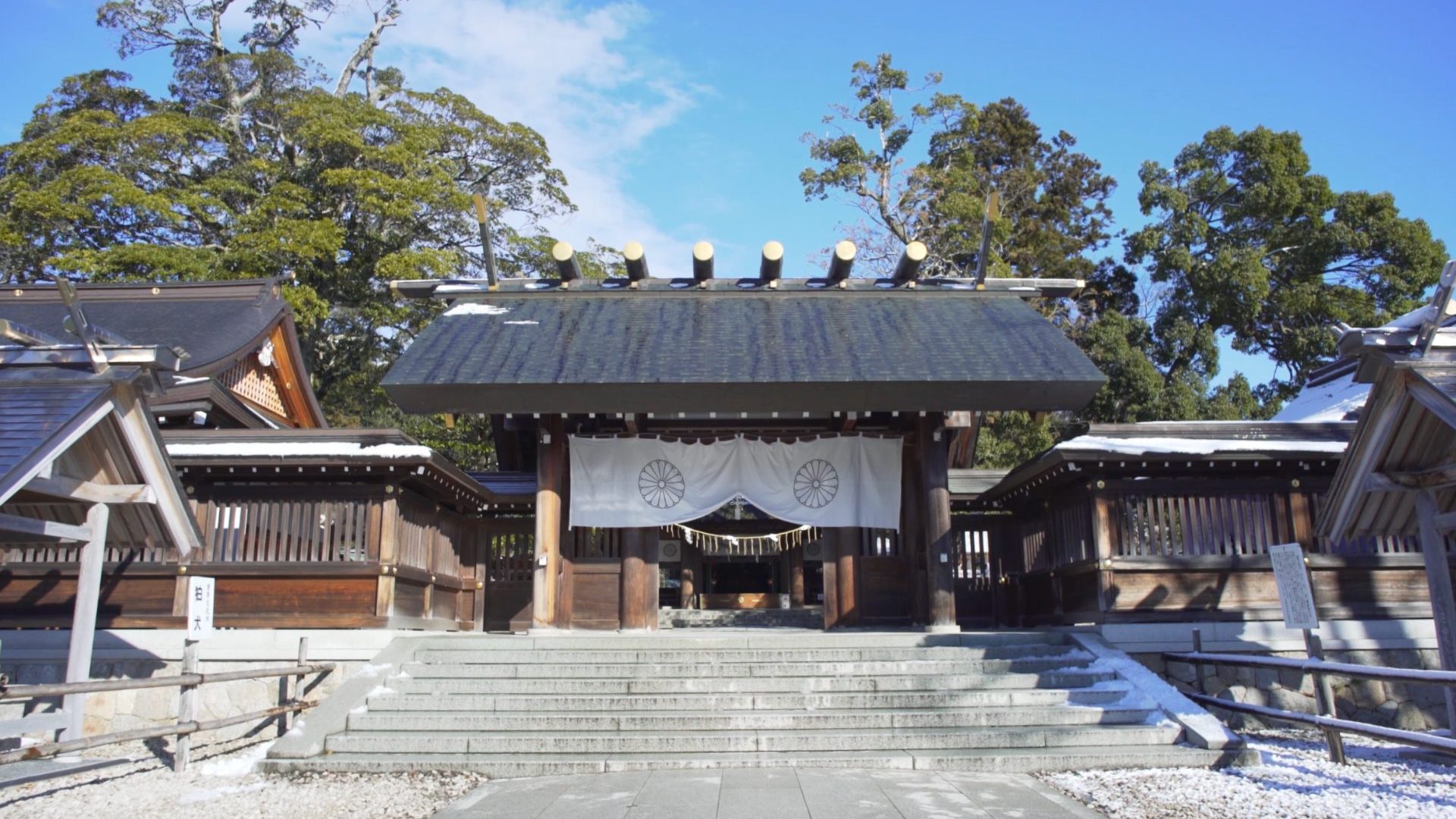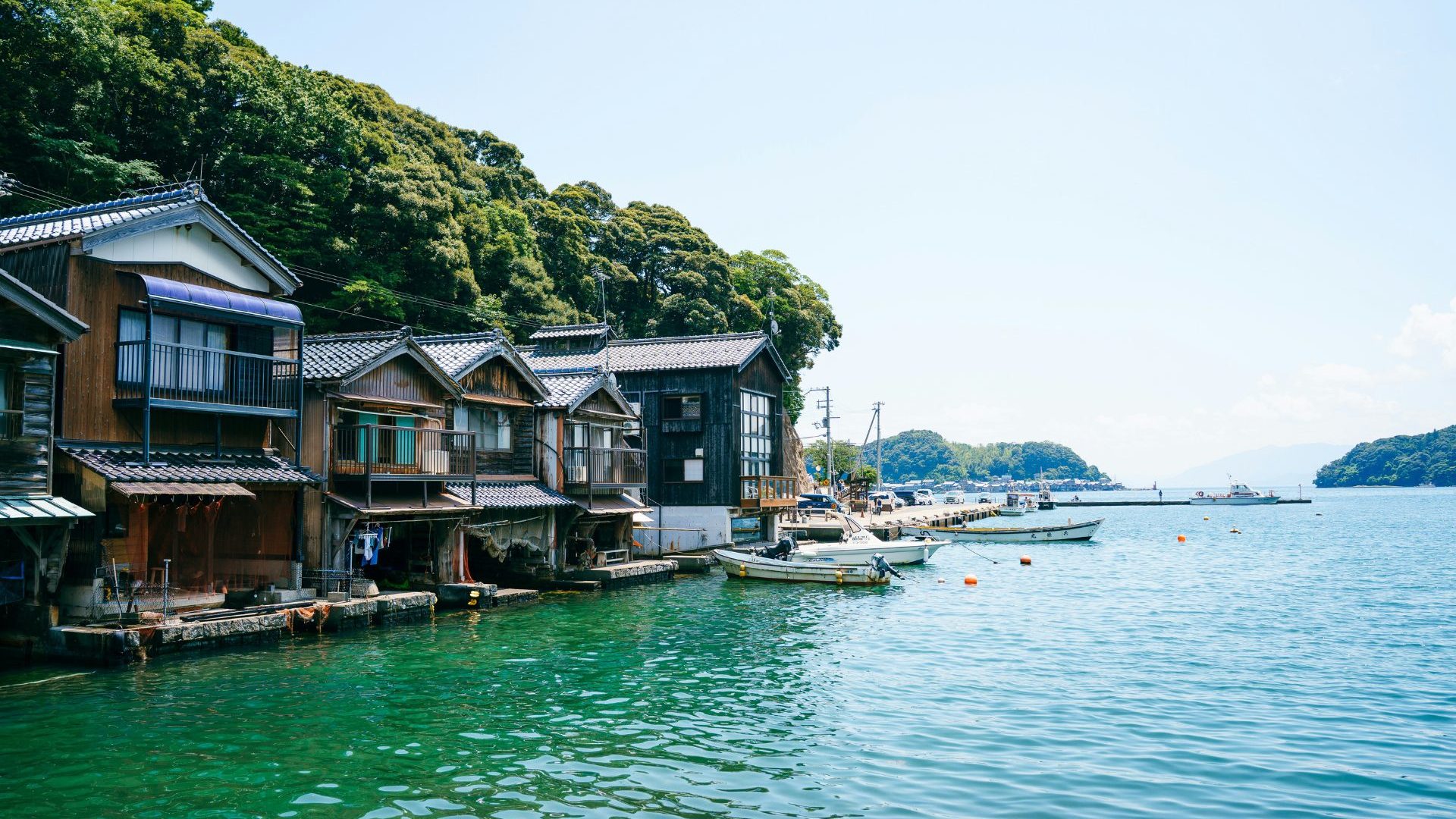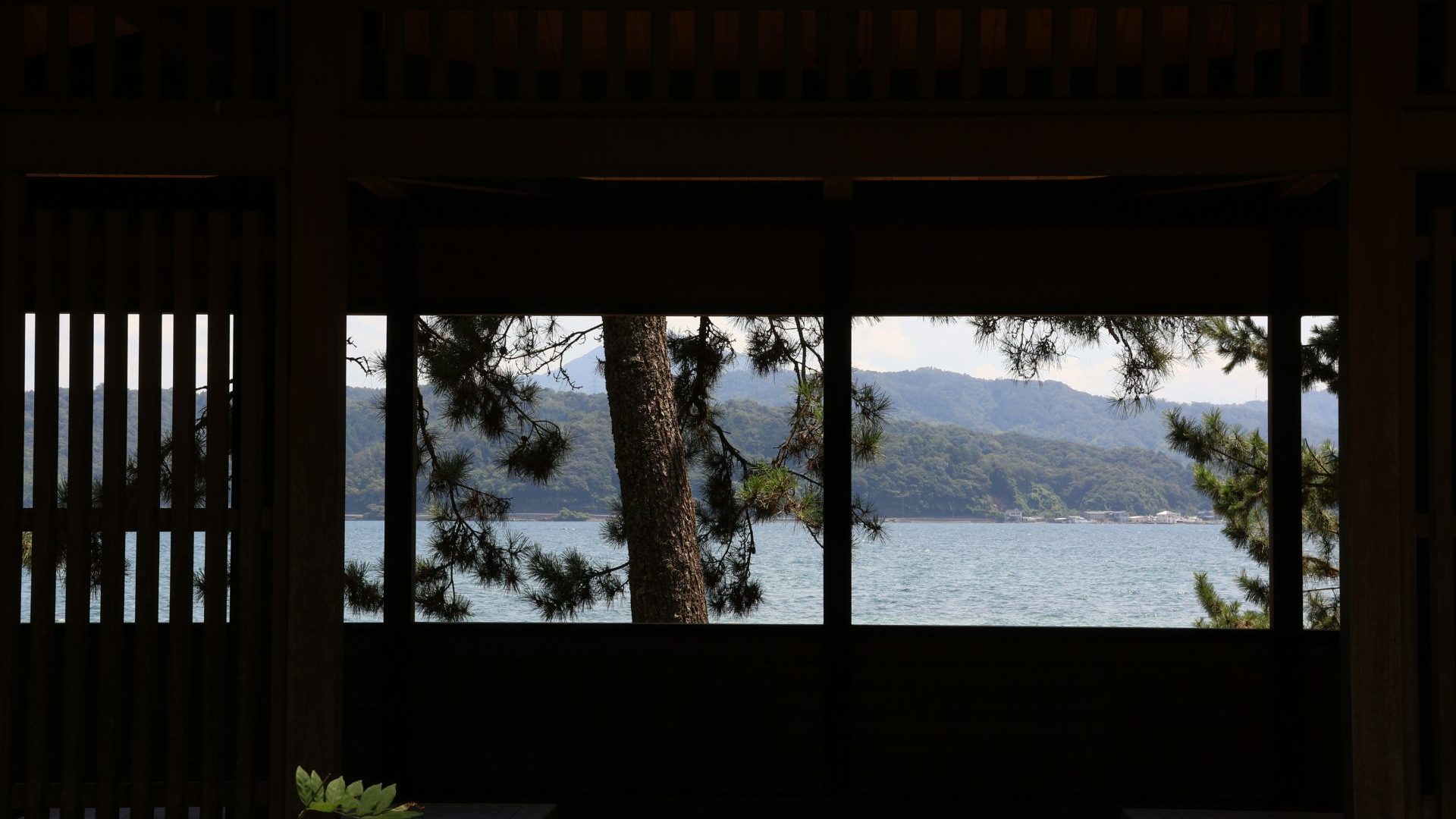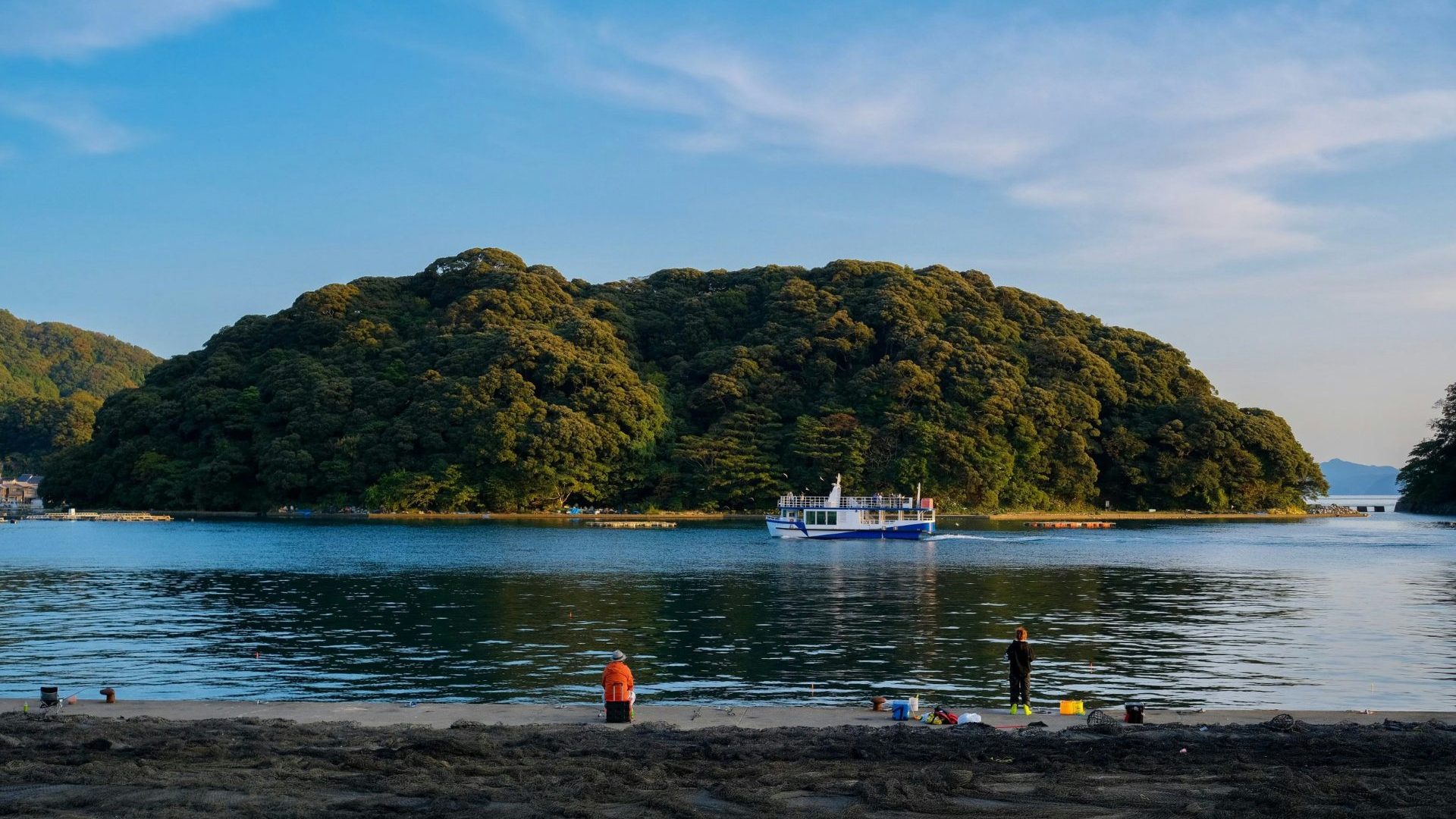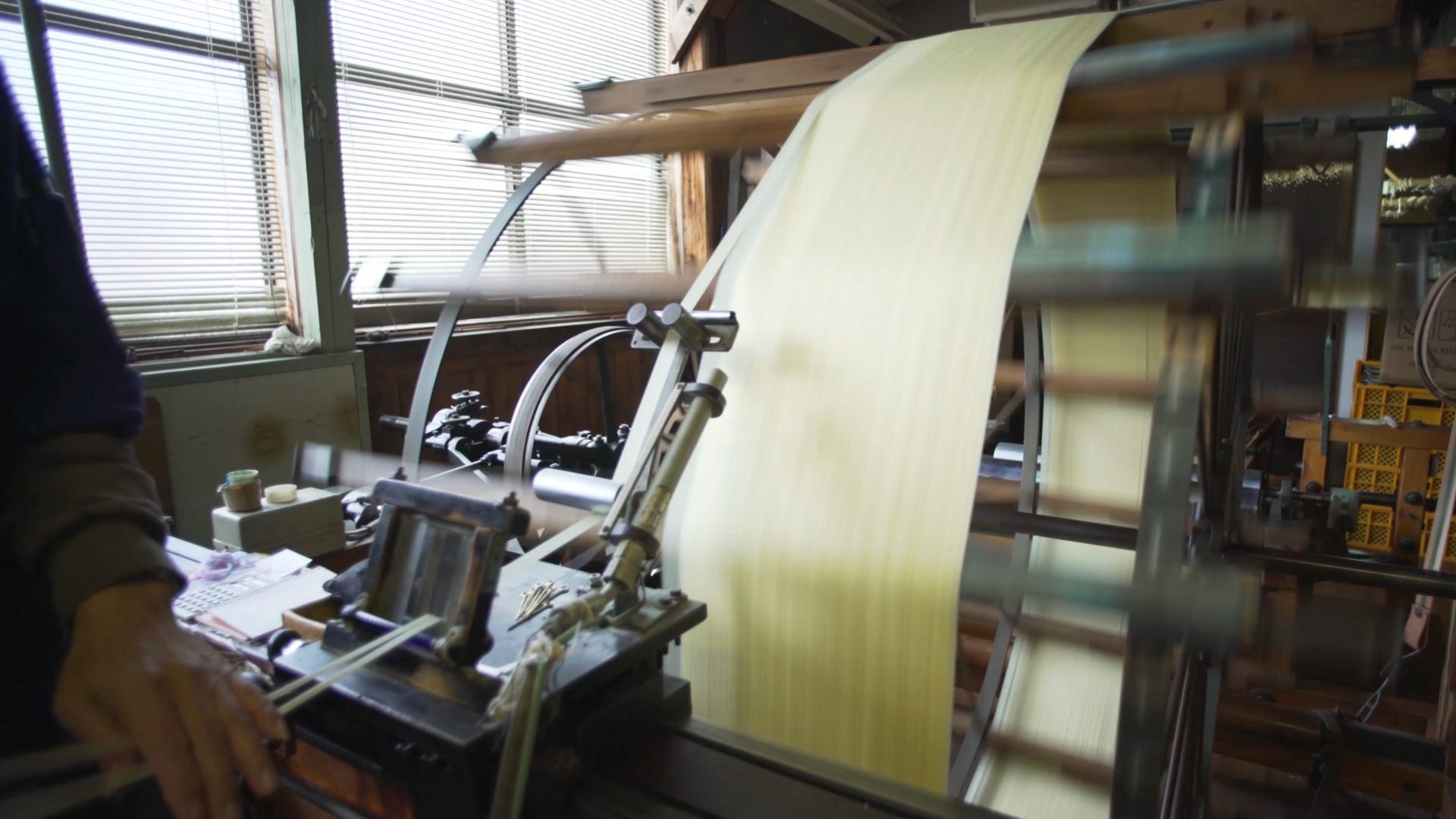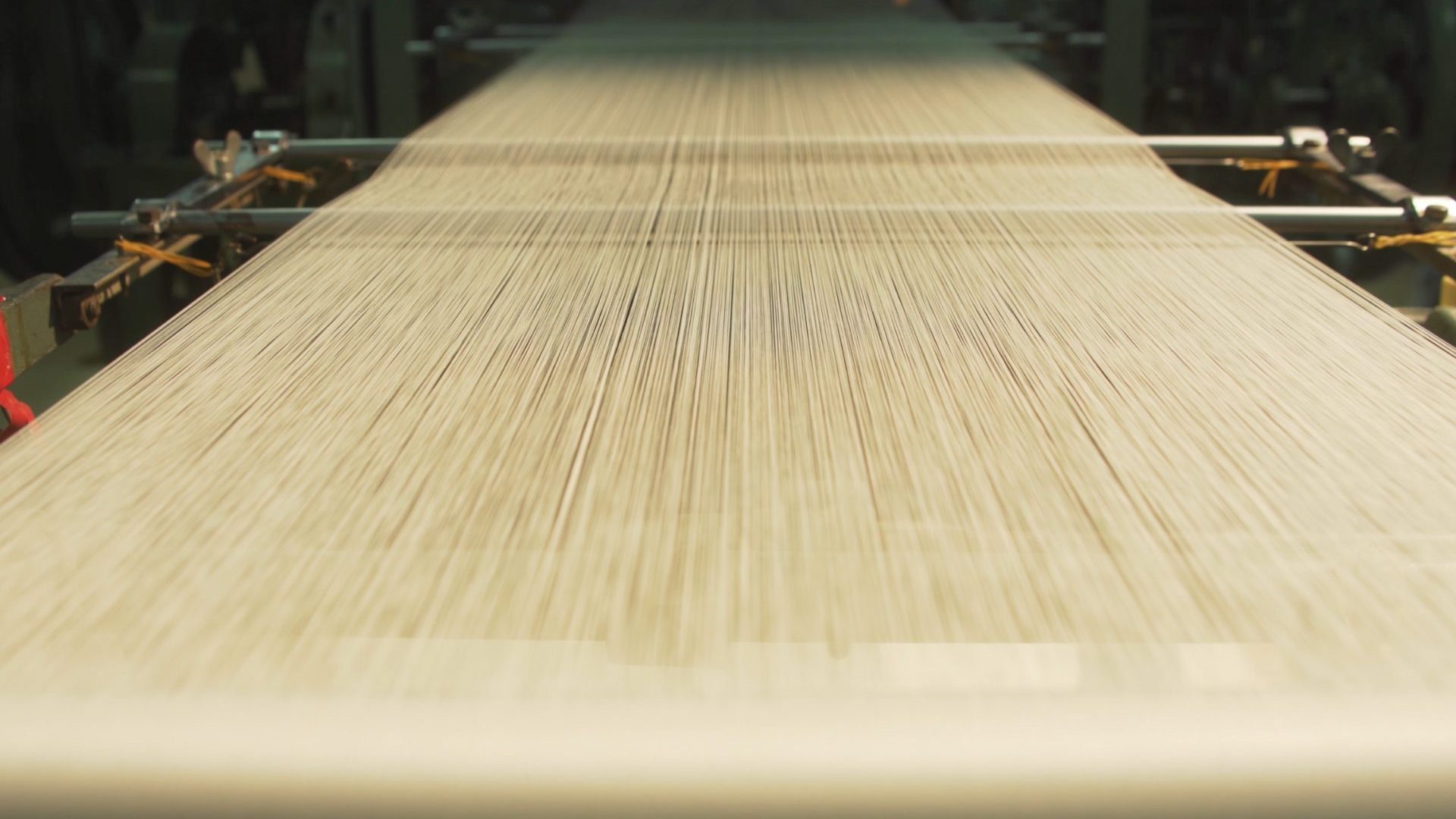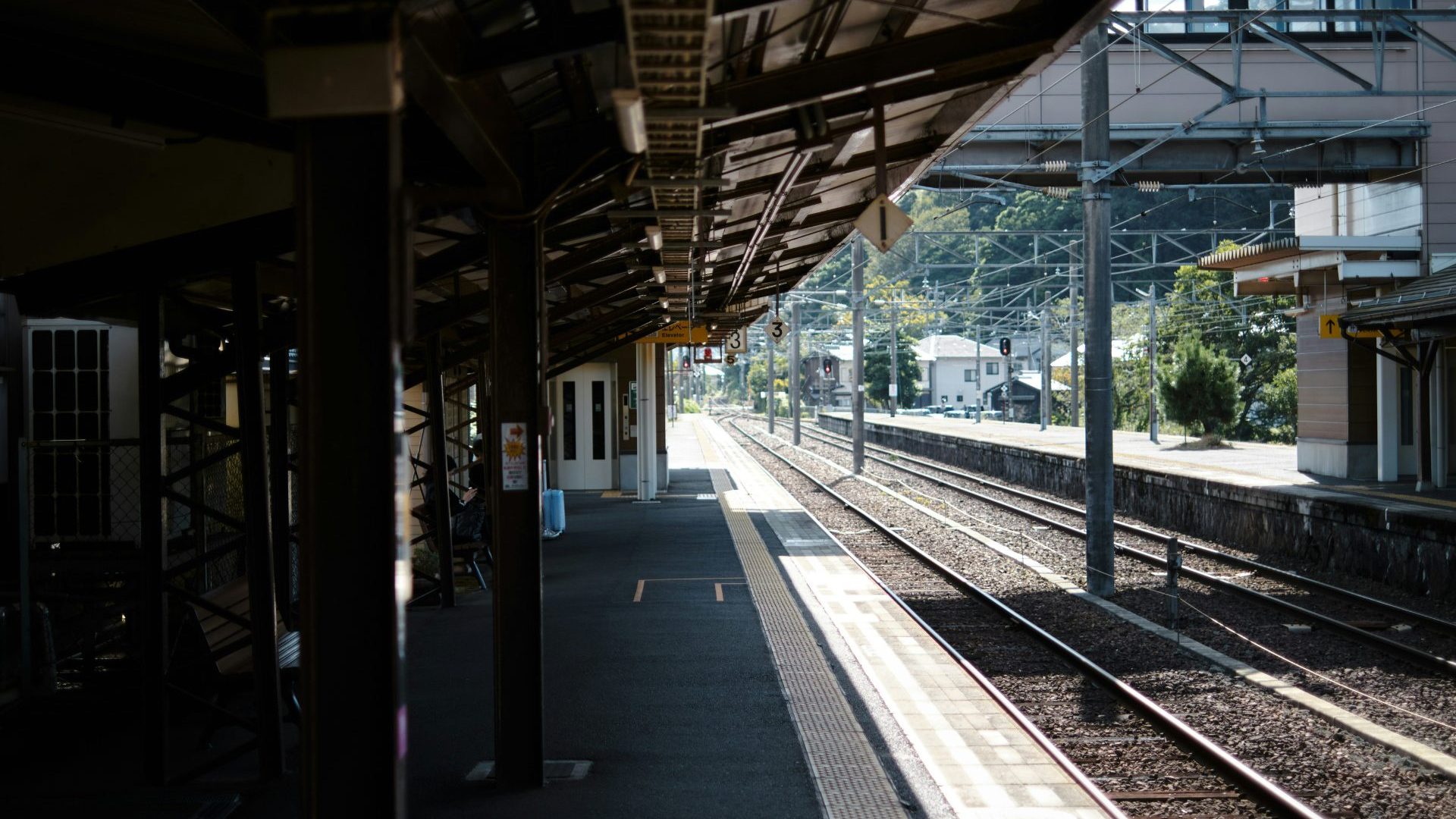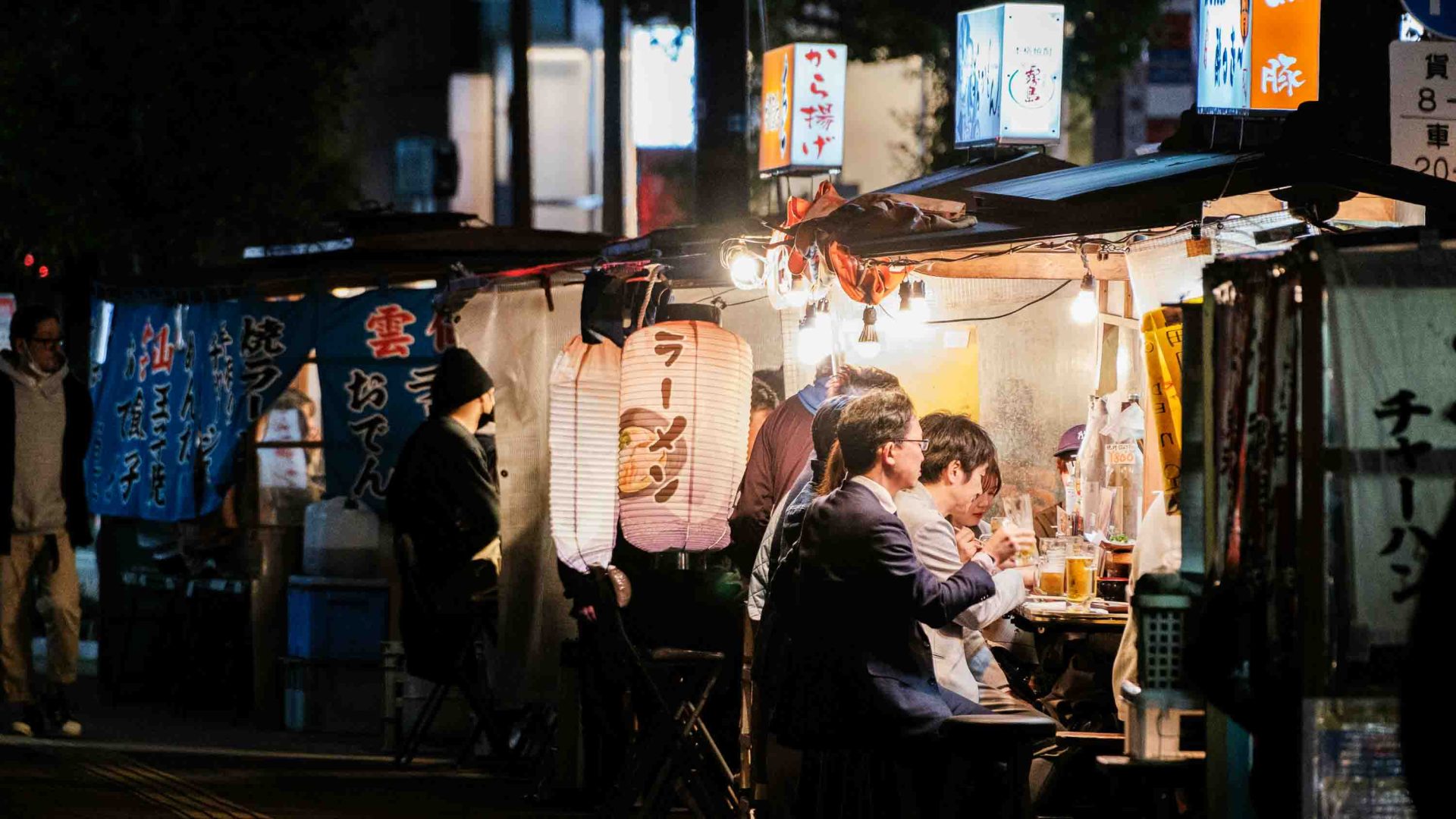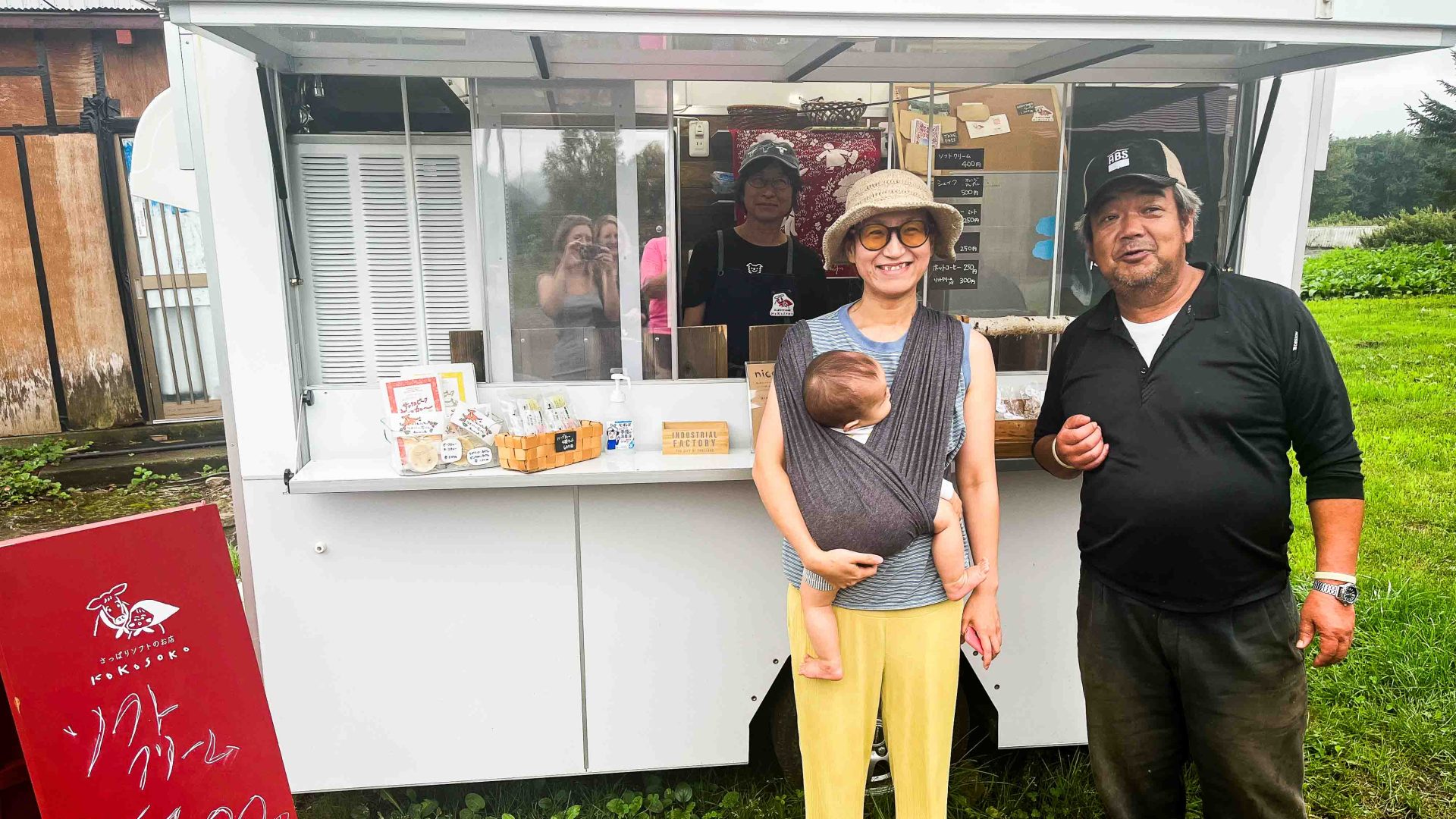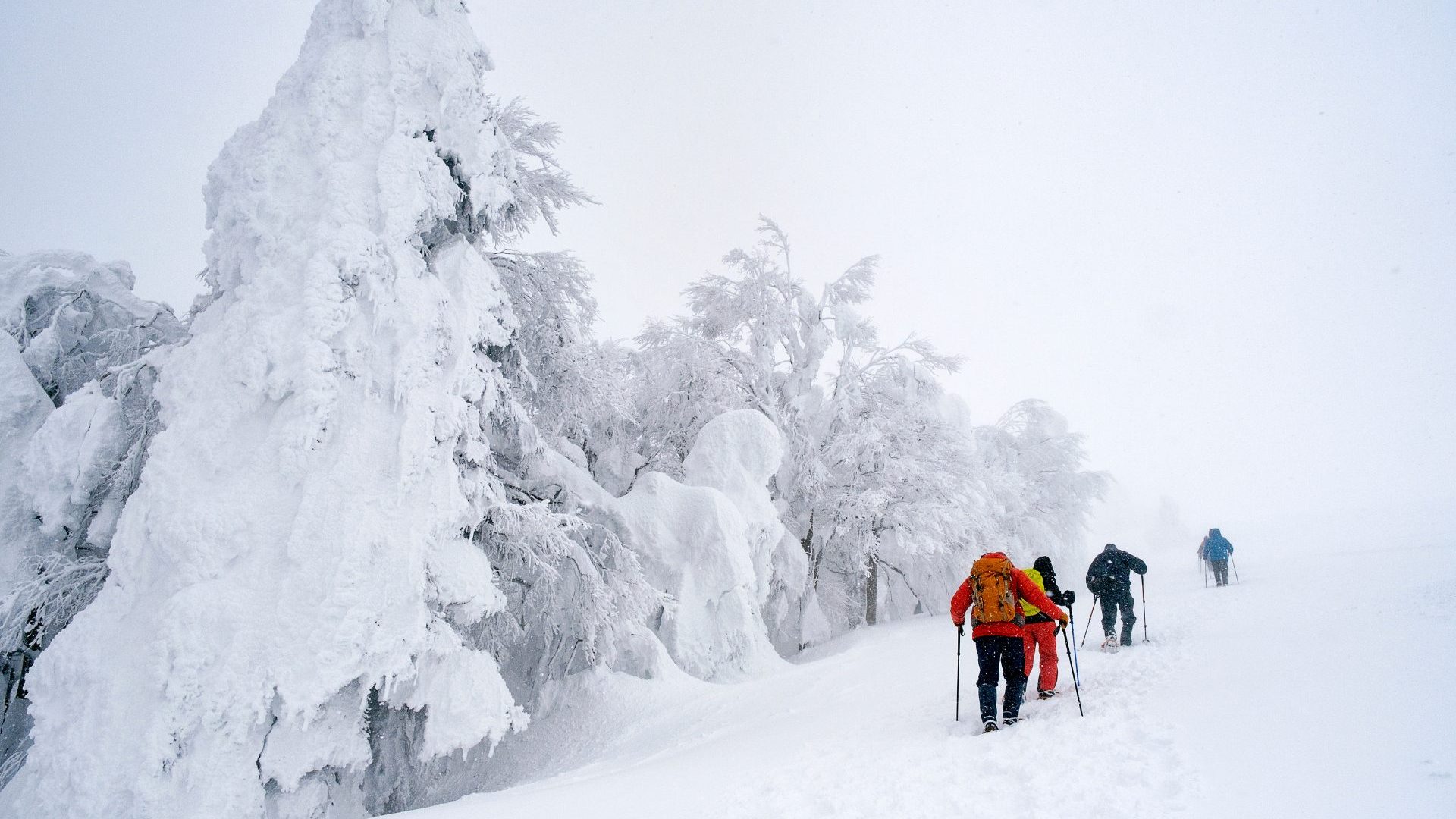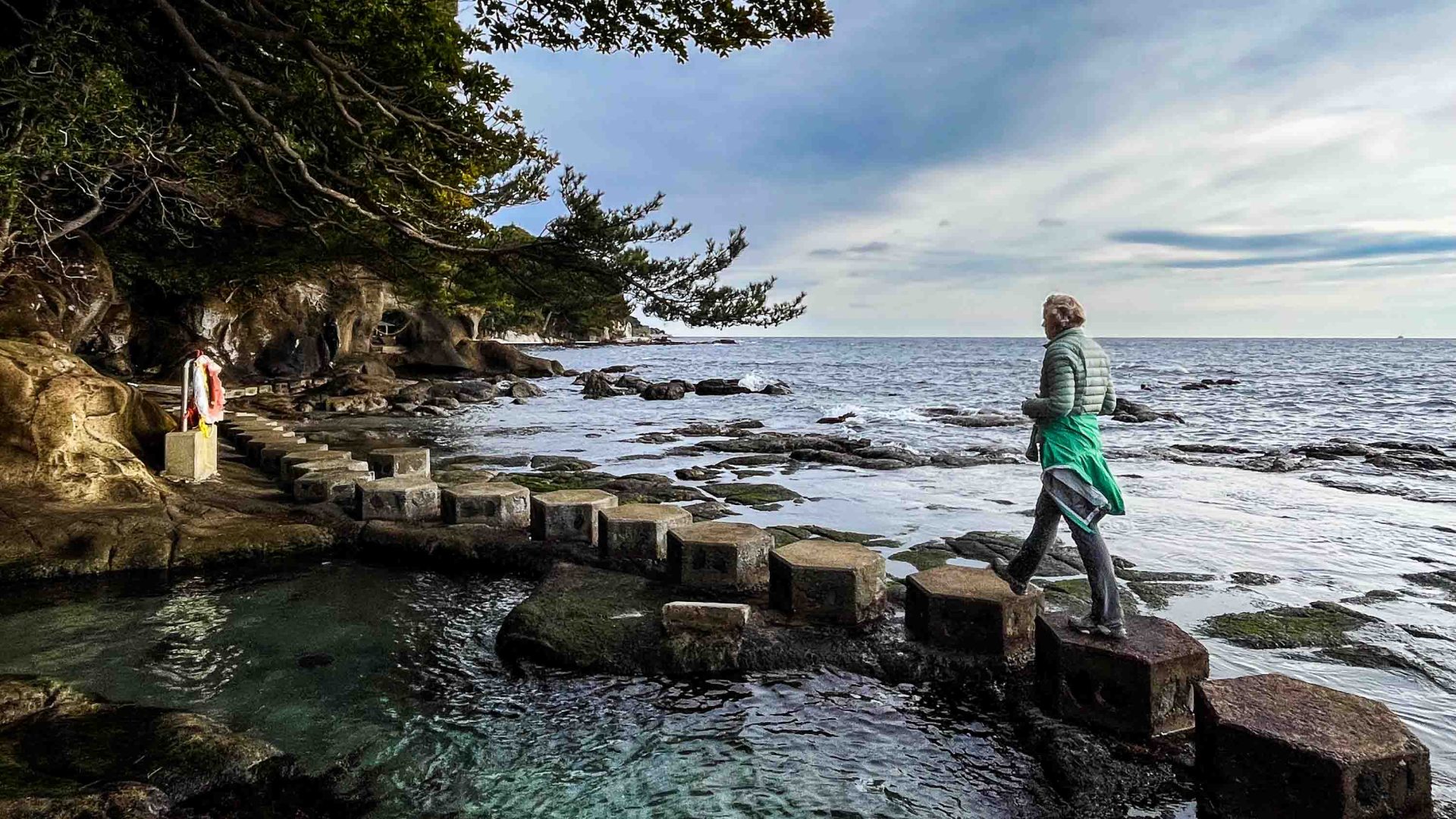Just as a Buddhist temple overlooks the sandbar’s southern edge, a Shintō shrine stands guard to the north: Motoise Kono-jinja. Shintō is Japan’s Indigenous, animistic religion, in which people pray to the many spirits for good fortune. Buddhism, which was brought to Japan in the sixth century, is focused on attaining enlightenment to transcend the cycle of suffering and rebirth. Japan is very syncretic, with most people observing traditions from both religions, and you’ll often see shrines and temples sharing sites.
Just 10 minutes’ walk from Motoise Kono-jinja’s main precinct is its okumiya (rear shrine), Manai-jinja. As you climb a stone staircase to the shrine, trees swaying overhead, the deep-rooted spirituality of the place washes over you. There’s evidence of worship here 2,500 years ago, with Jōmon- and Yayoi-era tools including stone axes and ritual pottery fragments excavated around the sacred Iwakura rock formation.
Also in the precincts is a sacred spring, which produces pure, clear water known as Ame no Manai no Mizu. You’re welcome to refresh yourself with a cup of this divine water, or even fill up a bottle.
